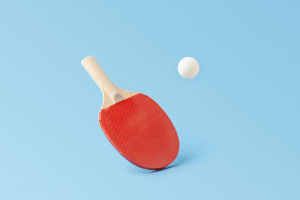Tennis, with a history spanning several centuries, has evolved significantly from its early days of hand-played games to today's high-tech competitive sports.
Not only have the rules changed profoundly, but the sport has also gained a rich cultural significance.
This article explores the history of tennis and its modern rule system to help you better understand this fascinating game.
1. Origins
The history of tennis dates back to 12th-century France, where the game was called “jeu de paume,” meaning “game of the palm,” as it was initially played with the hands. By the 16th century, this sport gained popularity among French nobility, evolving into "real tennis," where rackets were introduced.
In 1873, Sir Walter Clopton Wingfield of Britain invented modern tennis and promoted it across England. The first Wimbledon Championship took place in 1877, marking the formal entry of tennis into the contemporary competitive arena.
2. Types of Tennis Courts
Tennis matches are usually played on four courts: grass, hard, clay, and indoor carpet. Each court type affects the speed, bounce, and movement style of the game. Grass courts are known for their fast pace and irregular bounce, favoring players with strong serve-and-volley skills.
Clay courts are slower with a higher bounce, which is better suited for extended rallies. Hard courts provide a balanced playing experience between grass and clay, while carpet courts, now less common, are mainly used for indoor events.
3. Basic Rules
Tennis matches are generally divided by gender, with men’s matches often played in a best-of-five format, while women’s are best-of-three. After reaching six games, with a two-game lead, a player wins a set. In case of a tie, a tiebreaker game is played, where a two-point lead determines the winner.
4. Serving and Hitting
The serve is a critical element at the start of each match. Players must stand behind the baseline, toss the ball into the air, and strike it into the opponent’s service box.
A first-serve failure allows for a second attempt; however, if both fail, the opponent scores. The serve's success greatly impacts the match flow, especially on fast courts, where a powerful serve can secure points quickly. When returning the ball, players must hit it back after one bounce and avoid sending it out of bounds, as these count as faults.
5. Tennis Balls and Equipment
Modern tennis uses yellow rubber balls with a fiber coating for durability and visibility.
Racket selection is also crucial. While early rackets were made of wood, advancements in material science have led to metal and composite rackets that are lightweight and capable of powerful shots. Players typically wear specialized tennis shoes designed for traction and preventing slips on different court surfaces.
6. Fitness and Social Benefits of Tennis
Tennis is a competitive sport and an efficient way to stay fit. It strengthens cardiovascular health, improves reflexes, and enhances coordination. Additionally, tennis is widely enjoyed as a social activity, attracting players of all ages, and making courts lively social hubs.
The journey of tennis from a noble pastime to a popular sport showcases its allure while bearing witness to its evolving rules and technologies. Knowing the history and rules of tennis not only enhances the viewing experience but also deepens our appreciation for the sport’s rich cultural heritage and value.


